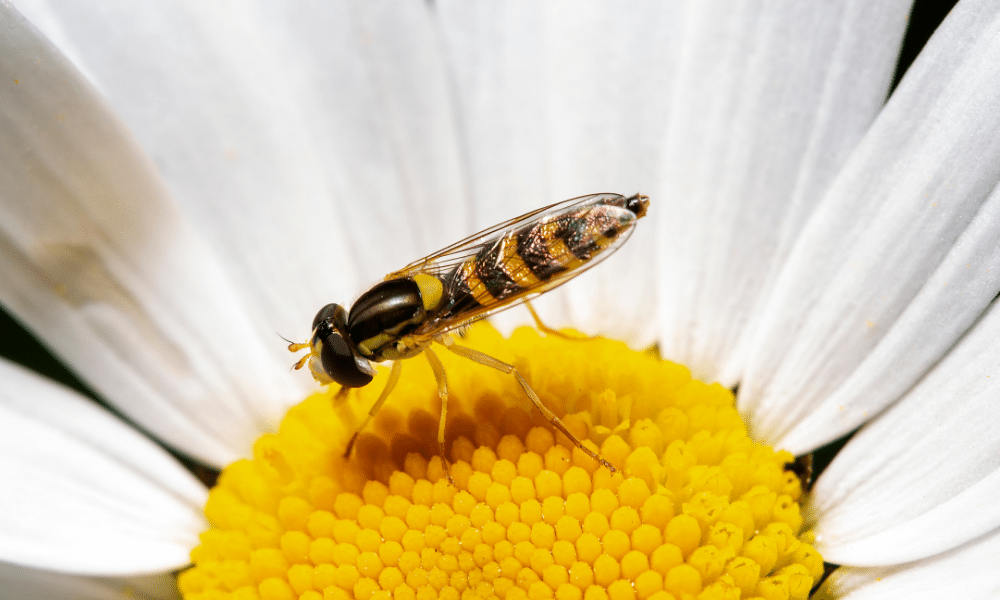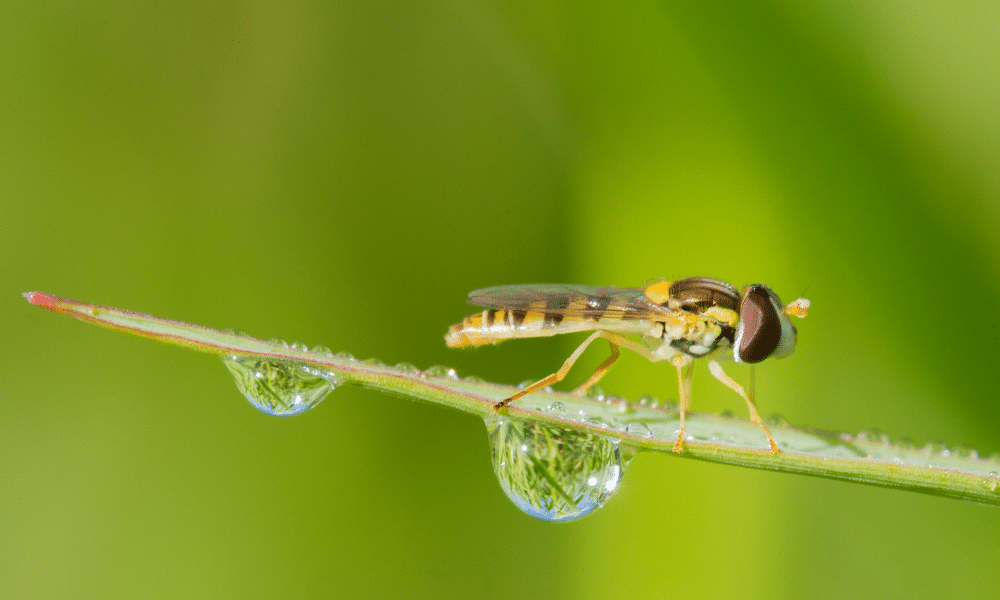Even though they look like wasps, hoverflies are flies. Known for their ability to hover and then dart to another area and then hover again, hoverflies seem to spend most of their time just hovering over plants around your garden.
So, what is the purpose of hoverflies? Do hoverflies pollinate? Should you encourage hoverflies? And, ultimately, are hoverflies beneficial?
Yes, hoverflies are extremely beneficial to their local ecosystems. The adults are excellent pollinators and the larvae will eat aphids until they are ready to go into their cocoons. Both of these actions provide an immense amount of benefit.
What is the Purpose of Hoverflies?
Hoverflies are a beneficial addition to your garden. While the adults will help with pollination, a major advantage to having hoverflies in your garden is their larvae. The larvae of a hoverfly will search the undersides of leaves looking for aphids.
Aphids are a pest that can be detrimental to your plant’s health. Once an aphid outbreak occurs, it is almost impossible to contain as it spreads from plant to plant until your entire garden is being eaten alive.
Luckily, the hoverfly larvae eat aphids as their main food source. The more adult hoverflies in your space, the more eggs they will lay. These eggs hatch as the larvae which then cocoon on the underside of leaves for almost 2 weeks before emerging as adult hoverflies. Then, the cycle will repeat itself.
Do Hoverflies Pollinate?
Yes, adult hoverflies are vital pollinators. In some areas, hoverflies are the most important pollinator of native wildflowers (more important than bees for some species), making them extremely important to the ecosystem.
We are all aware of how important bees are for pollination. There are campaigns across the world to help save the population of bees. And while that is a worthy cause and while bees are still the most important pollinator, it’s important to recognise that they are not the sole pollinators on our planet.
Hoverflies are vitally important for pollination and can take some of the heavy lifting from bees while we work to stabilise and then increase bee populations across the globe.

Should You Encourage Hoverflies?
Yes, you should encourage hoverflies. While these bee-looking insects are not actually bees, they provide benefits like pollination and pest control.
With aphids causing extensive damage annually, it is important to encourage the aphid-eating hoverflies. Hoverflies help keep the aphid population down and in control, due to the hoverfly larvae eating almost a diet exclusively of aphids.
There are over 6,000 types of hoverflies worldwide, making them an important part of many ecosystems throughout the world. If we can encourage a hoverfly population increase, we can allow the bee population to come back properly while we develop more bee-friendly pesticides and farming practices.
There is no quick fix for the declining bee population. We need to give it time. Hoverflies can buy us a little time.
Are Hoverflies Pointless?
Hoverflies are far from pointless. In fact, these are extremely beneficial insects in all of their life stages.
As larvae they feed almost solely on aphids, keeping the pest population in control and preventing large aphid infestations.
Hoverflies are also very powerful pollinators once they reach adulthood. Adult hoverflies look very similar to bees and pollinating wasps, but they are still within the fly family. Like bees and wasps, these insects are commonly found on beautiful flowers or hovering around luscious fragrances from other plants.
With the fall of the bee population being closely monitored, we can rest assured that the hoverfly population can help provide a bandaid until the bees make their comeback.
Summary
Hoverflies are extremely beneficial in all life stages. In fact, these insects are such wonderful pollinators that they are often confused for bees due to the way they look and where people most often see them, in and around flowers.
Once adult female hoverflies lay their eggs, the cycle begins. These eggs hatch to larvae which feast on aphids, providing an impressive natural pesticide protection. After they are done feasting on the aphids, they go into a cocoon and emerge as full-grown adult hoverflies.
These hoverflies then go flower to flower to eat the nectar, indirectly pollinating the plants. Then the adult hoverflies lay eggs and the cycle starts over.
Hoverflies help provide a bandaid over the failing bee ecosystem. We can focus on creating more bee-friendly farming practices while encouraging hoverfly population increases. Since hoverflies also offer the benefit of pest control, it is easy to see why these insects are considered some of the most beneficial insects to modern farming and gardening.







